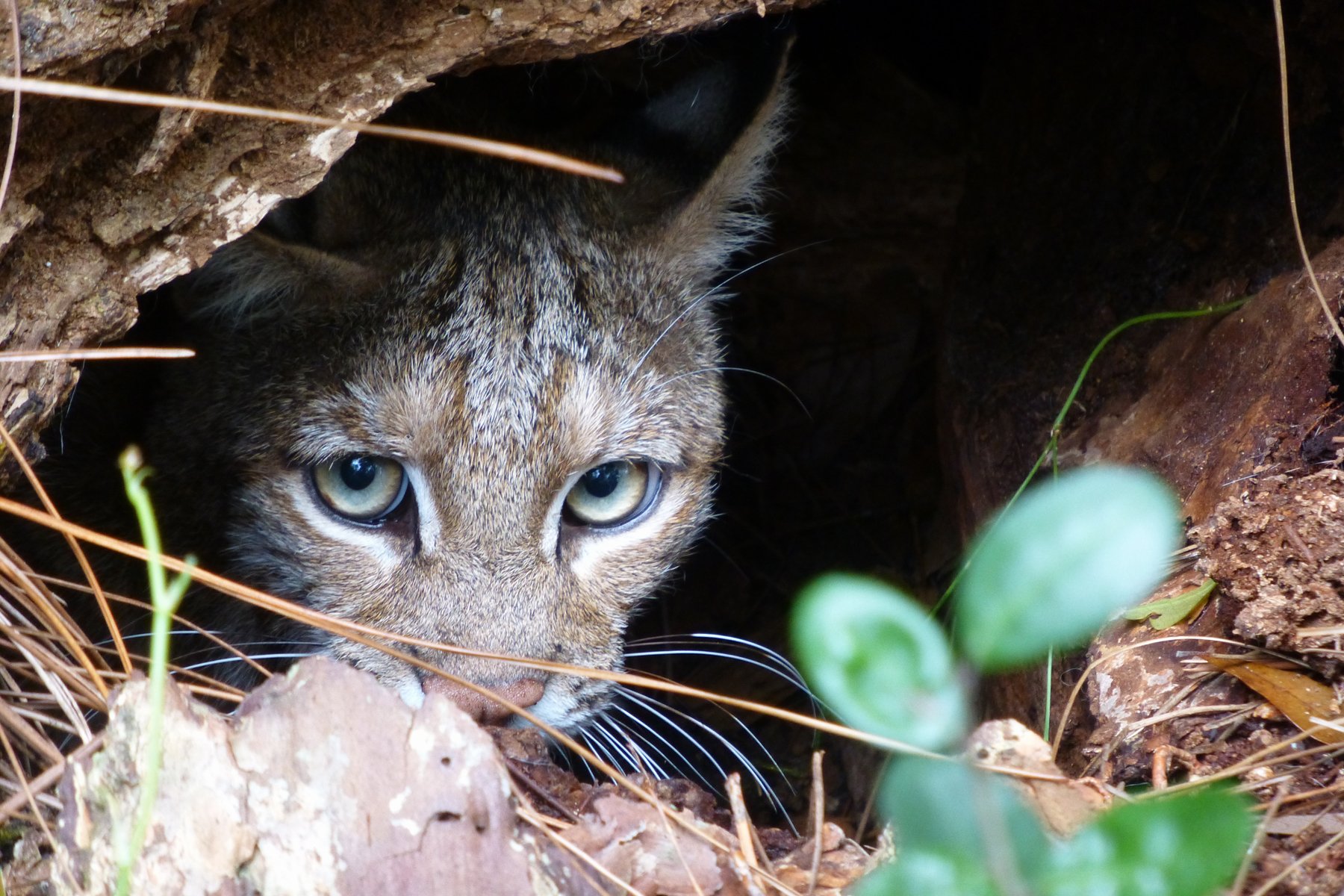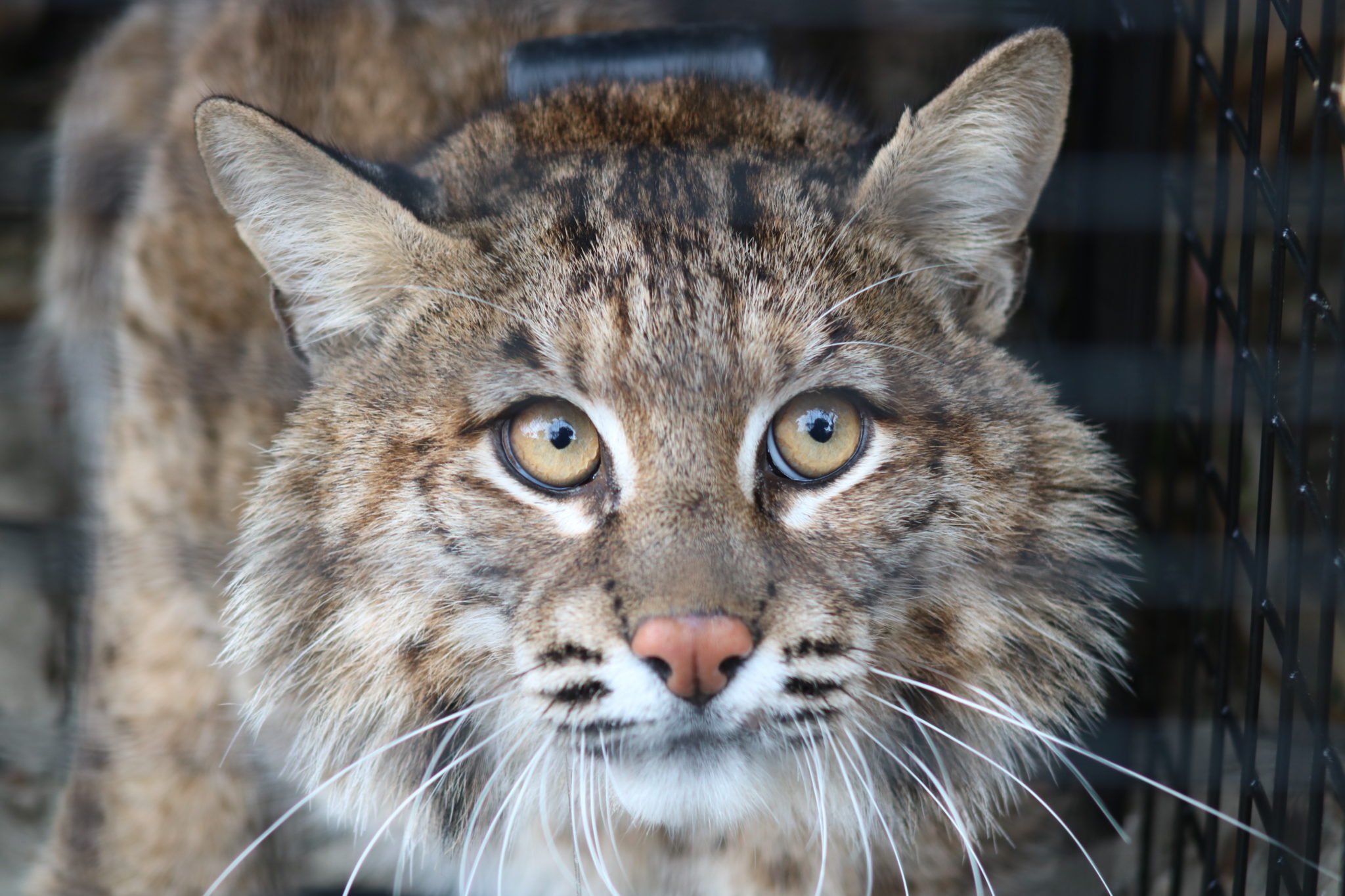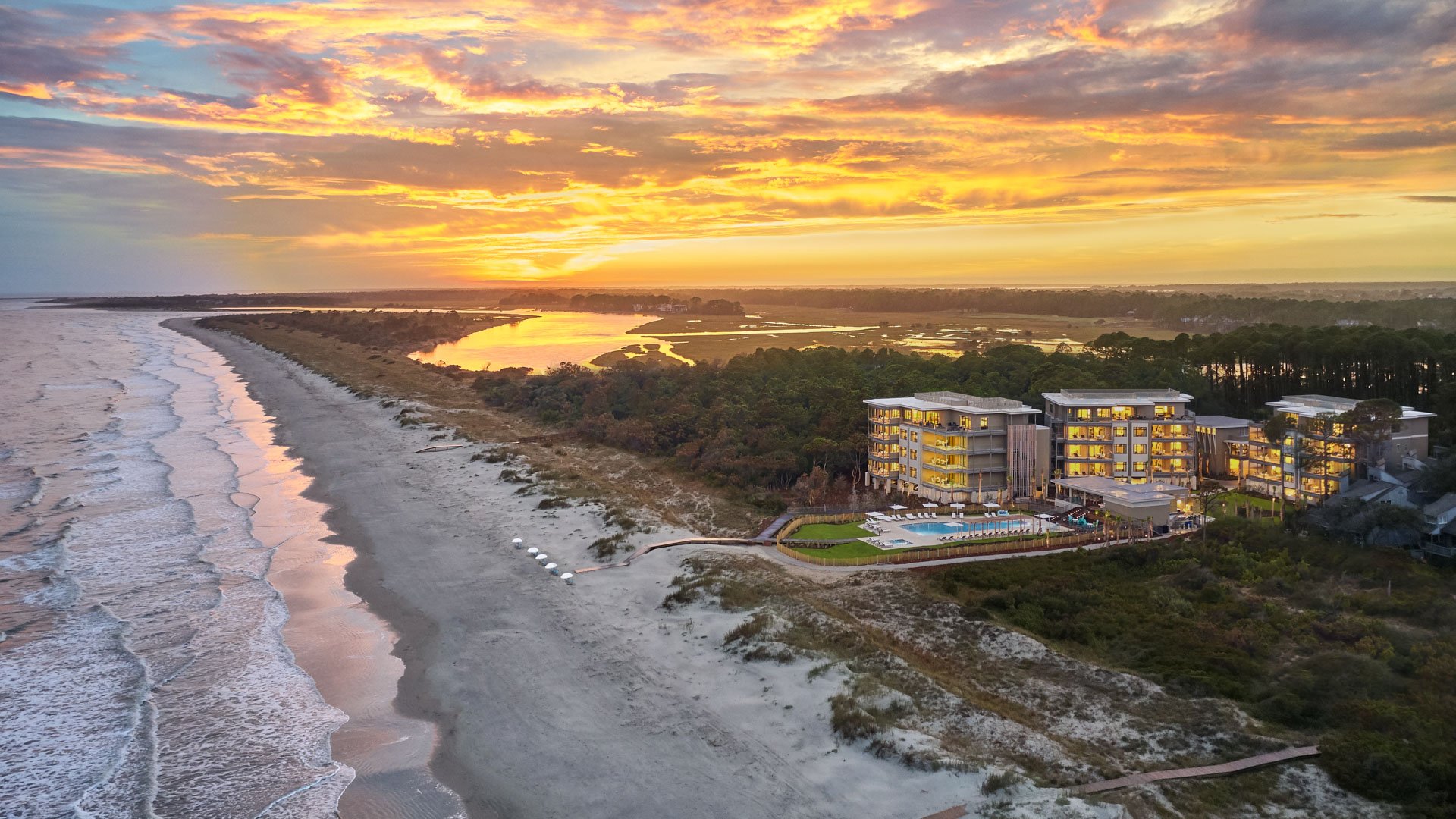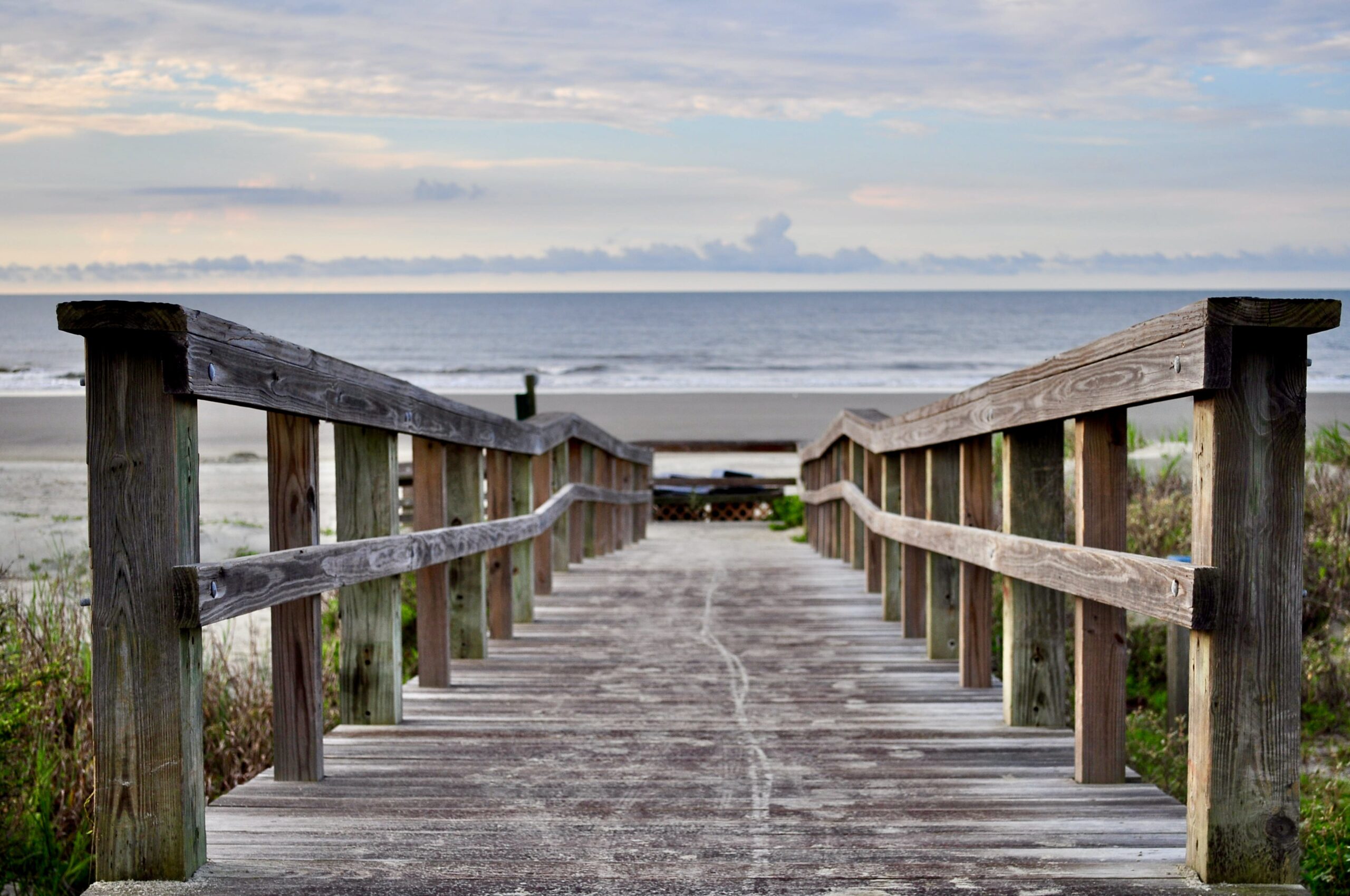Hidden Helpers: Kiawah's Bobcats
March 20, 2021

Bobcats dwell throughout the continental United States. In South Carolina, they congregate their populations mainly in the coastal plain region. The particulars of their presence on Kiawah are noteworthy for two reasons.
First, until recently, Kiawah has enjoyed twice the typical density of these animals. Second, despite development, these wild felines truly live amongst their human resident counterparts. Both unique conditions are thanks to responsible environmental protocols which ensure ample food and available habitat.
Bobcats pose no threat to humans (or pets) and serve a vital role in naturally managing populations of rats, deer, and other wildlife. Because of their critical importance to the island’s ecosystem, several research projects have been conducted to understand and support them here. You may be surprised to learn that The Kiawah Bobcat GPS Research Project is the longest, continuous GPS study of the species in the world!

BOBCAT LIFE
Breeding season runs February through April. Kittens are born two months later, putting peak kitten season around April and May. The den is usually located under a brush pile, in a hollow tree stump, or a palmetto thicket. Bobcat kittens are blind for their first 10-14 days. After a month, they move from milk to small prey their mother brings back to the den for them to practice hunting and eating. At two months old, bobcat kittens leave the den, but follow mom around for up to a year, until the next breeding season.
Swift and agile, adult bobcats are twice the size of a house cat, with longer hind legs and a shorter tail. They are adept at stalking and catching their prey due to excellent binocular vision and depth perception, along with exceptional hearing. Streaked and spotted coats, with brown and black markings, make them almost impossible to see in our lush forest landscape, further ensuring the element of surprise.
CAMOUFLAGE CHAMPIONS
Rarely seen, even by expert local researchers studying them, bobcats nonetheless are on the move all over Kiawah. GPS tracking has identified 100,000 locations where bobcats have been detected on the island. You may spot one in a backyard, on the golf courses, or sprinting across the road. Because they hunt at night your best chance to catch a glimpse is from dusk to dawn. During the day, they stick to marsh edges or lie in secondary dunes, patches of cover where there are less people.
Dense understory and scrub shrub are bobcats’ preferred habitat. The undisturbed areas around Timbers Kiawah provide prime viewing. Especially the bottleneck of land just to the west, where Captain Sam’s Spit enters into Beachwalker Park. That narrow strip funnels heavy bobcat movement, and is where the most dens have been discovered on Kiawah overall.

A VITAL ROLE, THREATENED
Their overall stealthy behavior and impressive ability to avoid detection helps bobcats excel in their calling as a top predator on the island. Opportunistic hunters, they eat a variety of prey species including: rodents, rabbits, raccoons, deer fawns, birds, and even reptiles and amphibians. This keeps the ecosystem in check, a self-regulating balance.
Being at the top of the food chain on Kiawah, these wild cats have very few natural enemies. Up until recently, vehicle strikes and disease were their greatest threats, both fairly rare. Unfortunately a new threat has surfaced, one much more pervasive and deadly.
In just two years, use of a certain type of rodenticide has caused bobcat numbers on Kiawah to plummet from 30-40 to fewer than 10. The poison is used in bait boxes around homes and other buildings, and kills not only the rat, but whatever animal then consumes said rat (which became much easier to catch once poisoned). Secondary victims include birds of prey and bobcats. The word is spreading and hundreds of Kiawah homeowners, including Timbers Kiawah, have taken the “Bobcat Guardian Pledge” to cease using this particular product in their pest control methods.
CONSERVATION EFFORTS
Kiawah’s bobcats are in a precarious predicament. Ongoing data collected by Kiawah’s wildlife research team first identified the rodenticide problem, and they continue to monitor the situation and communicate with residents to encourage recovery.
The original bobcat research on Kiawah began 20 years ago. In collaboration with the University of Georgia School of Forest Resources, the town funded its first detailed study of bobcat ecology in 2000-2001. Fourteen bobcats were fitted with radio-collars, allowing researchers to track their movements. Progressive years added more studies with more radio collars. In 2007 the initial Bobcat GPS study launched which continues today. To date, 92 bobcats have been captured and fitted with the GPS collars.
How is this done? A rooster, in a separate and safe enclosure, is used to lure the bobcat into a trap. The bobcat is sedated and measurements are taken before placing (or replacing) a collar. Trapping is usually done in the winter and breeding season, when food isn’t as easy to come by and the animals are moving around more.
The GPS collects locations every four hours. Kiawah’s research team focuses on the data in April and May, searching for females initiating dens. Once she initiates a den, her signal will stay concentrated in that spot. The team waits two weeks and then investigates that area for kittens. They inspect and tag them with a microchip so in future captures they can scan for family background.
Trapping for 2021 was recently completed. The numbers were low, but there is some encouraging news. A juvenile was caught, which means there is probably at least one female on the island capable of having kittens. (Last year none of the females had kittens.) Of the six bobcats currently wearing collars, four are female. Keep an eye out and maybe you’ll spot one on the trails.
Maintaining the environmental health of our unique community requires care and attention. Timbers Kiawah is proud to play its part in protecting our bobcat neighbors, and preserving the natural rhythms of this beautiful island.
Much thanks to Jim Jordan for assistance with this article and photos. Jim has served as Wildlife Biologist for the Town of Kiawah Island since 2000. He has conducted and coordinated many research projects here, primarily focused on white-tailed deer ecology and fawn survival, bobcat ecology and habitat use, songbird migration and branding, and most recently alligator physiology and behavior.







